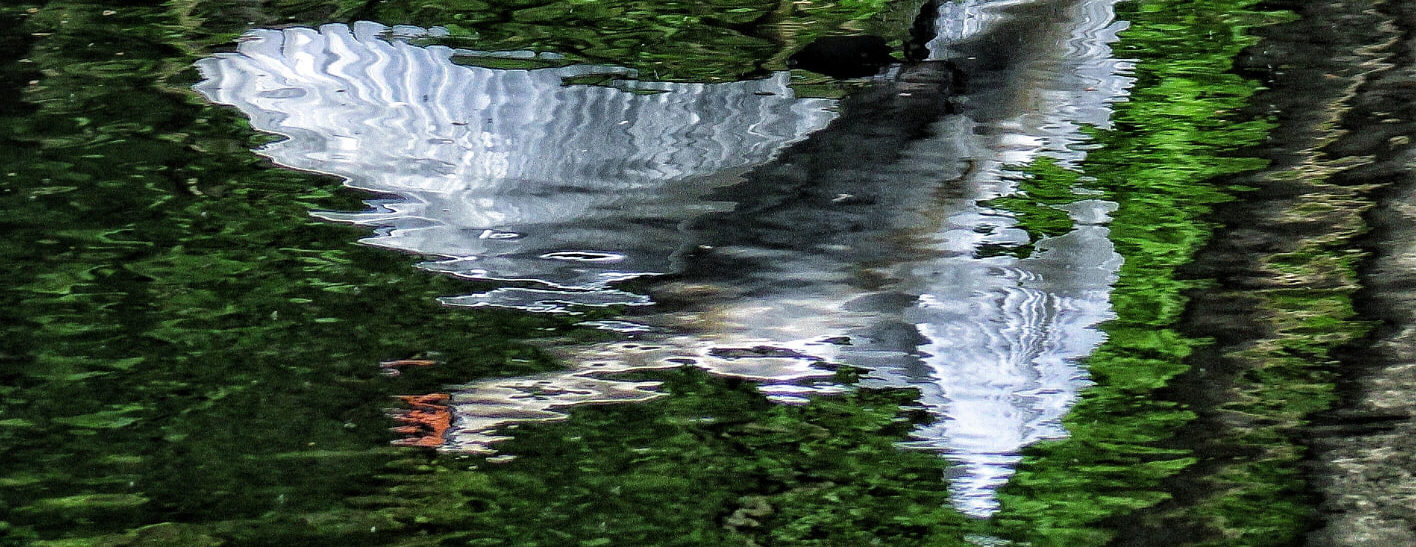Over the last few years, a series of community-based archaeological evaluation, excavation, and research has helped to identify several previously unknown sites of archaeological and heritage interest in Aden Country Park. The significant sites of interest include the Neolithic site, Aden Mansion House, T-Shaped Structure, and an Late 19th & Early 20th Century Trench site. The uncovering of these significantly important sites from Aden’s history not only offers a unique opportunity to explain, and interpret each site, but it also expands on the story of life on Aden over thousands of years. Click on any of the links below for further information.
Neolithic Site
In 2017 fieldwalking and a geophysical survey were carried out and found three aligned post-holes which were then explored further through an archaeological dig in 2018. During the ten-day dig, a trench 30x16m was cleared, cleaned, and features half excavated. The excavation uncovered what is believed to be a building, oriented roughly Southwest-Northeast consisting of at least 70 features. The excavated building is heavily ploughed and burrowed but the bases of features excavated suggest that it was possibly a building 12-14m wide and 27m long consisting of posts set in post-holes with several undetermined features. There are also two lines of post-holes to the North and the West which may represent entrances into the structure. It would appear that the structure was an unroofed enclosure, possibly that of a Neolithic mortuary enclosure.
Aden Mansion House
In 2015 an archaeological dig at the Aden Mansion House identified a well-preserved floor of geometric pattern extending the full width of the hall and into the window bay. This is attributed to the Aberdeen architect John Smith c1840. In 2019 a further archaeological dig was held where twenty trenches were excavated, mainly targeting geophysical anomalies (highlighted through the 2017 geophysical survey) and searching for evidence of earlier structures. As part of the excavations an impressive four feet high stone-lined drain, along with the remains of the late 19th Century Pond and fountain base were discovered. Finds also included 18th and 19th Century pottery, glass, window glass, brick, ceramic roof furniture and garden furniture including ceramic garden planters and plant pots, and concrete pond fragments.
T-Shaped Building
In 2015, Friends of Aden volunteer Derek Jennings was out walking his dog through the woodlands in the park. As Morlich wandered further into the trees Derek spotted some unusual bumps on the ground. Thinking that this might be the remains of the lost Keith Castle, Derek discussed his findings with archaeologist, Ali Cameron. Following an archaeological evaluation in 2015, and excavations in 2016, 2019, and 2021, the foundations of two buildings, a T-shaped building, and a rectangular building, previously thought to be the remains of an Episcopalian Meeting Place, were discovered in the woodland near to Hareshowe Farm. Research is ongoing, with the current thinking that the T-shaped building could be a post 1500s (post-reformation) chapel, one storey, with a thatch roof, which we estimate could have held over 100 people. In terms of the rectangular building, current thinking is that this is a domestic structure at the South end and possibly agricultural at the North end.
Late 19th & Early 20th Century Trenches
An archaeological excavation took place in 2017 at the site which is located close to the Aden Caravan and Camping site. A total of nineteen trenches were excavated over a range of banks and ditches and the interiors of features. A group of 10 structures were recorded and trenches through these features revealed that they are all post early 19th century in date. There are zig-zag trenches associated with the period up to and including WWI but there are older structures with 120–130-year-old trees growing on them. These are probably associated with training in the mid to late 19th century organized by General Russell who trained the local volunteers. At the beginning of the war with the huge influx of recruits into the army, the digging of practice trenches was a means of imparting a valuable military skill to the soldiers.
It is important to note that these archaeological investigations have only been made possible with funding support from the National Lottery Heritage Fund (NLHF), Historic Environment Scotland (HES) and support from Aberdeenshire Council itself.




